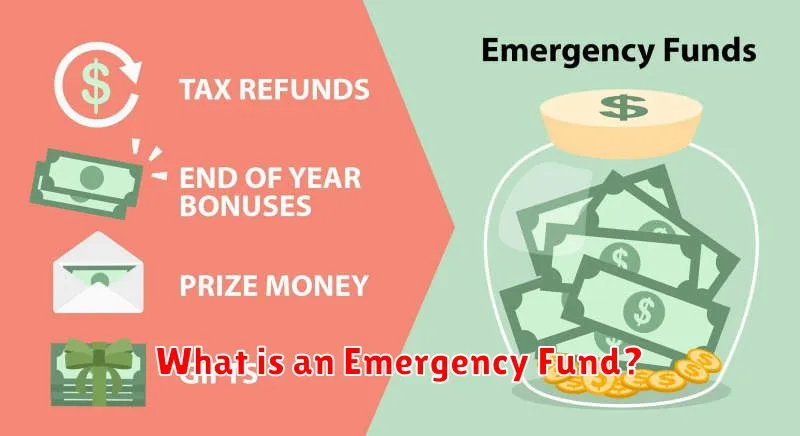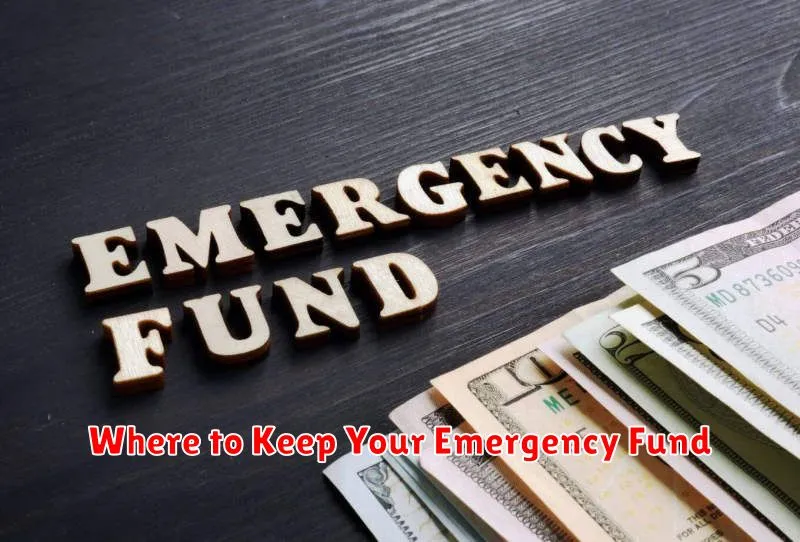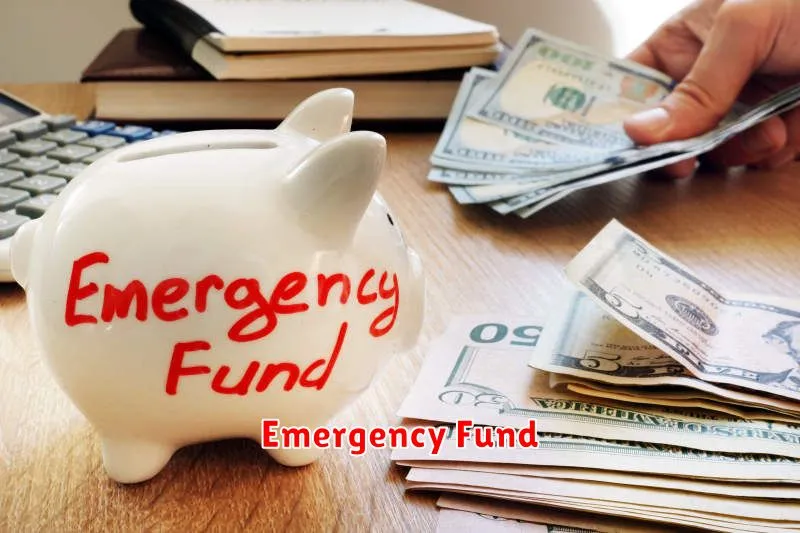Life is full of surprises, and unfortunately, not all of them are good. Unexpected events like a sudden job loss, medical emergency, or car repairs can derail even the most carefully crafted budget. That’s where an emergency fund comes in. An emergency fund acts as a financial safety net, providing you with peace of mind and the resources to navigate unexpected challenges without derailing your finances.
This article will guide you through the importance of having an emergency fund and provide practical tips on how to build one quickly. Whether you’re starting from scratch or looking to bolster your existing savings, we’ve got you covered. Let’s dive in and get you prepared for whatever life throws your way!
What is an Emergency Fund?

An emergency fund is money you set aside specifically for unexpected expenses or financial hardships. Think of it as a financial safety net designed to help you weather life’s storms without derailing your finances or plunging you into debt.
These unexpected events can range from relatively small inconveniences, like a car repair or replacing a broken appliance, to more significant challenges, such as job loss, medical emergencies, or unexpected home repairs.
Having a dedicated emergency fund provides peace of mind knowing you have a financial cushion to fall back on, allowing you to navigate these situations with less stress and potentially avoid going into debt.
Why Having an Emergency Fund is Non-Negotiable
Life is unpredictable. No matter how well you plan or how stable your income seems, unexpected events can and do happen. Your car could break down, you might face a sudden medical expense, or you could lose your job without warning. These situations are stressful enough on their own, but they become significantly more daunting when you don’t have the financial cushion to navigate them. That’s where an emergency fund comes in.
An emergency fund is not just a savings account; it’s your financial safety net. It provides peace of mind, knowing you have a reserve dedicated to handling unexpected costs without going into debt. This financial buffer allows you to face unexpected challenges with greater confidence and control, making the difference between weathering the storm and being swept away by it.
Without an emergency fund, you’re forced to make tough choices when faced with unforeseen expenses. This could mean racking up high-interest credit card debt, depleting retirement savings, or being unable to cover essential needs. An emergency fund empowers you to protect your financial well-being and avoid making desperate financial decisions when life throws you a curveball. Having an emergency fund is non-negotiable because it’s not about if an emergency will happen, but when.
How Much Should You Save in Your Emergency Fund?
The magic number for an emergency fund is often cited as three to six months’ worth of living expenses. This means having enough saved to cover your essential costs like rent/mortgage, utilities, groceries, transportation, and debt payments for that duration, should you lose your income.
However, your ideal emergency fund size depends on your personal circumstances. Factors to consider include:
- Job security: If you have a stable job, you might feel comfortable with a smaller emergency fund.
- Income stability: Freelancers or those with variable incomes may need a larger cushion.
- Dependents: Supporting a family means greater financial responsibility and potentially a larger emergency fund.
- Risk tolerance: A larger emergency fund can provide greater peace of mind for those with lower risk tolerance.
It’s perfectly acceptable to start with a smaller goal, such as one month’s worth of expenses, and gradually build up your emergency fund over time. The most important thing is to have something saved for those unexpected life events.
Steps to Building an Emergency Fund Quickly
Building an emergency fund doesn’t have to take years. Here are some steps to make it happen fast:
1. Set a Savings Goal (and Make it Realistic): Start with a smaller, achievable goal like $500 or $1,000. This initial target provides a psychological boost and motivates you to keep going.
2. Identify Areas to Cut Back: Analyze your spending habits and pinpoint non-essential expenses you can temporarily reduce or eliminate. Think subscription services, dining out, or entertainment.
3. Automate Your Savings: Set up automatic transfers from your checking to your savings account each month, even if it’s a small amount. This “pay yourself first” strategy ensures consistent progress.
4. Explore Additional Income Sources: Look for ways to supplement your income, such as selling unused items, freelancing, or taking on a side gig. Even a small amount can make a big difference.
5. Windfalls Go Directly to Savings: Deposit any unexpected income like tax refunds, bonuses, or monetary gifts directly into your emergency fund. This rapidly accelerates your progress.
Remember, consistency is key. By taking these steps, you’ll be well on your way to building a solid financial safety net.
Where to Keep Your Emergency Fund

You’ve worked hard to build your emergency fund, so you want to keep it somewhere safe and accessible. Here are a few suitable options:
High-yield Savings Accounts: These accounts offer higher interest rates than traditional savings accounts, helping your money grow faster. They are FDIC-insured, ensuring your funds are secure.
Money Market Accounts: Similar to savings accounts, money market accounts may offer slightly higher interest rates and come with check-writing privileges. However, they may have higher minimum balance requirements.
Separate Checking Account: Consider keeping your emergency fund in a separate checking account linked to your primary one. This keeps it accessible while preventing accidental spending.
Things to Avoid:
- Investing in the stock market is not recommended for emergency funds due to market volatility.
- Certificates of deposit (CDs) lock in your money for a fixed period, limiting access in an emergency.
Ultimately, the best place to keep your emergency fund is a safe and liquid account where you can access it quickly and easily when needed.
Tips for Replenishing Your Emergency Fund After Use
Using your emergency fund can feel like a setback, but it’s important to remember that’s exactly what it’s for – unexpected expenses. The key is to replenish it quickly to ensure you’re prepared for the next financial hiccup. Here are some tips to get your fund back on track:
1. Assess and Adjust Your Budget: Review your current spending habits and identify areas where you can cut back, even temporarily. Redirecting funds from non-essential spending can help rebuild your savings faster.
2. Prioritize Replenishment: Make a plan to deposit a specific amount into your emergency fund each month, treating it like any other essential bill. Automating these transfers can make the process even easier.
3. Explore Additional Income Streams: Consider taking on a side hustle or freelance work to generate extra income specifically designated for your emergency fund.
4. Windfalls and Bonuses: Direct any unexpected income like tax refunds, work bonuses, or cash gifts towards your emergency fund. This can significantly accelerate the replenishment process.
5. Be Patient and Consistent: Rebuilding your fund might take time, especially if you’ve had a major expense. Stay committed to your savings plan and celebrate small milestones along the way.
Common Mistakes to Avoid When Building an Emergency Fund
Building an emergency fund is crucial for financial stability, but there are some common pitfalls to avoid. By recognizing these mistakes, you can ensure your emergency fund is truly effective when you need it most.
1. Not Having a Goal in Mind: One of the biggest mistakes is not setting a specific savings target. Determine how many months of living expenses you want to cover and make it your goal.
2. Underestimating Expenses: Take the time to calculate your essential monthly costs accurately, including rent/mortgage, utilities, groceries, and debt payments. Underestimating expenses can leave you short in a crisis.
3. Keeping It Too Accessible: While you need easy access to your funds in an emergency, avoid keeping it in an account with a debit card you regularly use. This can tempt you to dip into it for non-emergency spending.
4. Not Adjusting for Life Changes: As your life evolves, so should your emergency fund. Marriage, having children, or a salary increase are all events that warrant reassessing and potentially increasing your savings goal.
5. Stopping Once You Reach Your Goal: An emergency fund isn’t a “set it and forget it” endeavor. Periodically review and replenish your savings, especially after using them for an unexpected expense.

